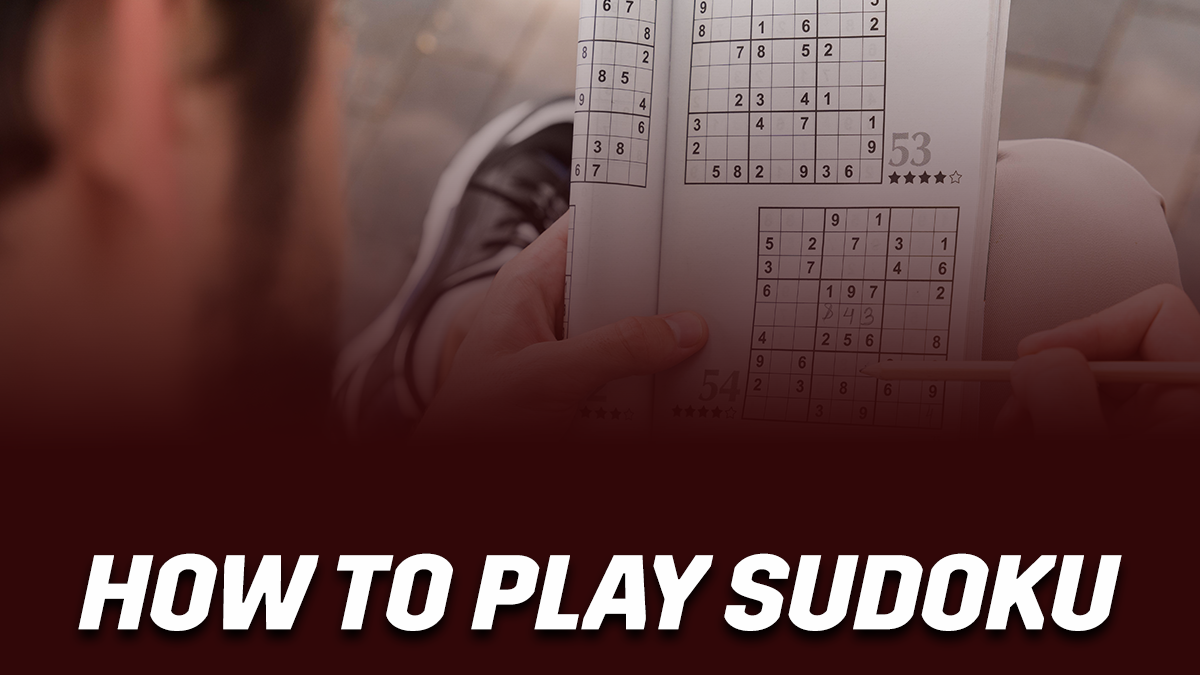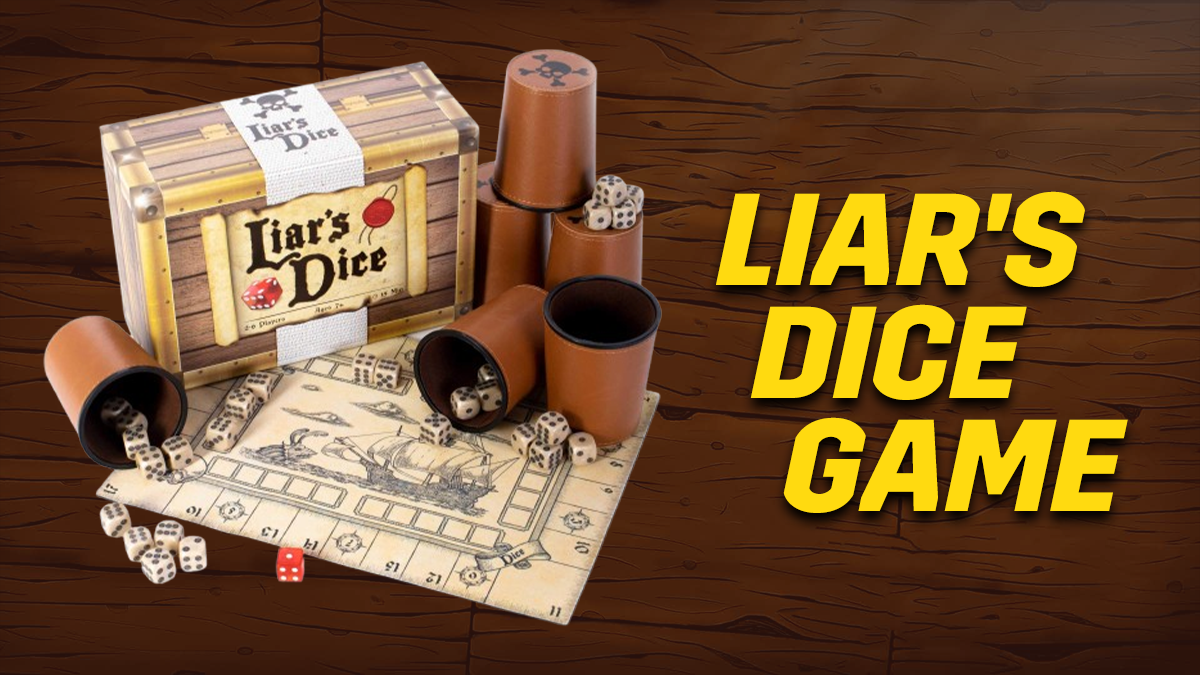Table of Contents
ToggleI still remember the first time I tried Sudoku. It was a lazy Sunday afternoon. My grandfather handed me a newspaper with a half-filled grid. “Give it a shot,” he said with a knowing smile. I stared at the numbers, confused but curious. After a few mistakes and a lot of erasing, I finally placed my first correct number. That small victory felt huge.
What started as a simple challenge soon became an obsession. I went from struggling with easy puzzles to tackling the hardest ones with confidence.
If you’ve ever wanted to learn how to play Sudoku and felt lost, don’t worry. This guide will take you step by step through easy, medium, and difficult puzzles, helping you crack the code just like I did.
How to Play Sudoku
Sudoku is a number puzzle that you can solve using logic. The goal is to fill a 9×9 grid with numbers from 1 to 9. But there are some important rules for playing Sudoku.
Each row must have all numbers from 1 to 9, without repeating any number. Each column must also have all numbers from 1 to 9, with no repeats. The grid is divided into nine small boxes called regions or blocks. Each region is a 3×3 square. It must also have all numbers from 1 to 9, without repeats.
The puzzle starts with some numbers already placed on the grid. Your job is to figure out where the missing numbers go. You can’t guess. You have to use logic to find the right numbers.
Each square in the puzzle is called a cell, and there are 81 cells in total. A row, a column, and a region each have 9 cells. The thick lines in the grid help you see the regions easily.
How do you play Sudoku when you’re lost? There is the trick: every puzzle has only one correct solution. You just need to find it by looking at the numbers already in place. Start with the easiest numbers and slowly work through the puzzle. You will get better and faster at solving it.
Rules of Sudoku Game
Sudoku is a logic puzzle that uses numbers 1 to 9. You don’t need math skills- just focus on placing numbers correctly! The goal is to fill the grid while following certain rules. The rules remain the same for easy, medium, and difficult puzzles.
Each row must have the numbers 1 to 9 without repeats
Think of each row as a unique set of numbers. You can’t have the same number twice in a row. Use the given numbers as clues to figure out what’s missing.
Each column must have the numbers 1 to 9 without repeats
Just like rows, each column also needs the numbers 1 to 9, with no duplicates. Check both rows and columns when placing numbers!
Each 3×3 box (nonet) must have the numbers 1 to 9 without repeats
The big 9×9 grid is divided into smaller 3×3 sections. Each section must also contain numbers 1 to 9, without repeating any.
Every row, column, and 3×3 box adds up to 45
If you add up the numbers 1 through 9, you get 45. This can help you double-check if you’ve placed numbers correctly!
Points to Remember
✔ There’s only one correct solution – If you follow the Sudoku rules, you’ll always reach the right answer.
✔ No guessing allowed – Every move must be based on logic, not luck. It also simplifies the game, no matter the difficulty level.
✔ You can take notes – Writing small numbers in empty spaces helps you keep track of possibilities. It is especially handy when dealing with a hard Sudoku puzzle.
Sudoku Difficulty Levels
Sudoku puzzles come in different difficulty levels. Each level depends on how many numbers are already filled in and how hard it is to find the missing ones.
Easy Sudoku
Easy Sudoku puzzles have many numbers already placed. You can solve them using simple scanning techniques. Look at each row, column, and box. Find missing numbers by checking what is already there. If only one number fits in a cell, write it down. You do not need to guess. Just keep scanning and filling in numbers.
Medium Sudoku
Medium puzzles have fewer numbers given. You need to think ahead and look at more than one row or column at a time. Sometimes, you must use pencil marks to note possible numbers in a cell. Then, check if one number is the only possible choice.
Hard Sudoku
Hard puzzles have very few numbers to start with. Basic scanning does not always work. You need to use advanced logic like pairs and elimination. Find numbers that must go together in two cells. If a number can only be in one place, write it down.
Once you grasp how to play Sudoku puzzles, you can move from easy puzzles with many given numbers to hard puzzles with deeper logic.
Puzzle Game: Beginner’s Guide to Solving a Rubik’s Cube!
How to Play Sudoku for Beginners
If you are just learning how to play Sudoku puzzles, start with smaller grids like 3×3, 4×4, or 6×6. These beginner-friendly versions follow the same rules of the Sudoku game but with fewer numbers. In a 4×4 Sudoku, each row, column, and 2×2 box must contain numbers 1 to 4 without repeats. This helps you understand the logic without feeling overwhelmed. A 3×3 grid is even simpler, using numbers 1 to 3. Once you’re comfortable spotting patterns and eliminating possibilities, you can move up to advanced solving techniques.
Where to Play Sudoku?
You can play Sudoku both online and offline. Many platforms offer free and paid options.
Online Sudoku
- Websites – Play Sudoku on sites like Sudoku.com, Web Sudoku, and NYTimes Sudoku. These sites offer different levels, from easy to expert.
- Mobile Apps – Download phone or tablet apps on Google Play or the Apple App Store. Popular apps include Sudoku by Brainium, Sudoku.com, and Microsoft Sudoku.
- Newspapers – Many newspapers, like The New York Times, USA Today, and The Washington Post, have Sudoku puzzles on their websites.
- Online Sudoku Communities – Join forums or social media groups to play and discuss strategies. Websites like Reddit and Sudoku Exchange have active players.
If you’re still learning ‘How do you play Sudoku?’, online platforms also provide tutorials and interactive hints to improve your skills.
Offline Sudoku
- Books – Buy Sudoku puzzle books at bookstores like Barnes & Noble and Amazon.
- Newspapers – Many local and national newspapers include daily Sudoku puzzles.
- Printables – Download and print free puzzles from sites like Puzzle Baron.
- Board Games – Some stores sell physical Sudoku board games with reusable grids and number pieces.
Tips for Playing Sudoku
One of the best ways to improve at how to play Sudoku puzzles is by using scanning techniques to quickly identify missing numbers.
Easy to Medium Puzzles
Scanning means carefully examining the puzzle to find numbers that fit. You will check rows, columns, and boxes to determine where numbers can go.
1. Look in One Direction
Start by looking at rows or columns. If a number is already in two rows, then it must go in the empty square of the third row inside that 3×3 box. For example, if the number 9 is in two boxes on the left and right but missing from the middle one, find a space in that box. That is where 9 should go. It is one of the best tips for Sudoku beginners.
2. Look in Two Directions
Sometimes, looking in one direction is not enough. You must also check columns and rows together. Suppose you are trying to find where the number 1 should go in a 3×3 box. If you see 1 already in two rows and also in a column, then there may be only one square left where 1 can fit. This method helps you place tricky numbers by looking at more than one direction at a time.
3. Find a Single Choice
Sometimes, a square has only one possible number. The other numbers are already used in the same row, column, or box. Suppose a square is missing a number. Check the row, column and box around it. If all numbers except one are taken, then the missing number is the answer. For example, if a square is missing a number and the only number left is 2, then that square must be 2.
4. Eliminate Numbers to Find the Right One
When beginners solve Sudoku puzzles, some numbers cannot be in certain squares. Suppose you are trying to place a 1. If a 1 is already in a box, then another 1 cannot go there. If a 1 is also in a column, then it cannot go there either. Keep checking until you find the only square where the 1 can go. It is one of the best tips for playing Sudoku when numbers are missing but have limited spaces to fit.
5. Search for Missing Numbers in Rows and Columns
When a row or column has only a few empty spaces, you can guess the missing numbers. For example, if a row already has 1, 2, 3, 4, 5, 8, and 9, then the missing numbers must be 6 and 7. If one of the empty squares is in a column that already has a 6, then that square must be 7. The other empty square must be 6. This method is useful near the end of a puzzle when only a few numbers are left to place.
6. Use Cross-Checking
When placing a number, check its row, column, and box together. For example, if you need to place 5 in a box but see that 5 is already in two rows of that box, the only empty spot in the third row is the correct place for 5.
Scanning Difficult Puzzles
There are difficult puzzles, too. In such Sudoku puzzles for seniors, scanning alone is not enough. You need to analyze the grid carefully. You can use small pencil marks to write possible numbers in empty squares. Then you use logic to figure out where numbers should go.
1. Finding Naked Pairs in a Box
Sometimes, two squares in a 3×3 box can only have two possible numbers. If two squares in the same box have only 4 and 9, then those squares must contain those numbers. This means no other square in that box can have 4 or 9. You can ignore these numbers in other empty squares and focus on solving the rest of the puzzle.
2. Finding Naked Pairs in Rows and Columns
The naked pair trick also works in rows and columns. If two squares in a row only contain 2 and 7, then no other square in that row can have 2 or 7. You can use this clue to solve other squares faster. It helps you remove numbers that cannot be used in certain places.
3. Finding Hidden Pairs in Rows and Columns
Sometimes, two numbers are hidden among many options. They only appear in two squares but are mixed with other possible numbers. For example, if 1 and 4 appear in only two squares of a row, even if other numbers are also written, then those squares must have 1 and 4. You can remove the extra numbers from those squares to make solving easier.
4. Using the X-Wing Strategy
This trick is useful in very hard puzzles. Imagine that number 4 can only go in two squares in two different rows. If the same happens in two different columns, then this forms an “X” pattern. This means that 4 must go in those two places. This also means 4 cannot go in any other square in those rows or columns. This trick is rare but very useful in expert-level puzzles.
5. “Hidden Triples” for Advanced Solving
The trick is similar to hidden pairs but involves three numbers. If three squares in a row, column or box contain the same three numbers and no other numbers, then those numbers must go in those three squares. That means those numbers cannot appear anywhere else in that row, column, or box.
Benefits of Regularly Playing Sudoku
Sudoku puzzles are good for many reasons. Playing them,
- Strengthens memory and recall.
- Improves concentration and focus.
- Sharpens logical thinking.
- Reduces stress and anxiety.
- Sharpens decision-making.
- Keeps your brain active and engaged.
- Delays cognitive decline.
Conclusion
We have finished learning how to play Sudoku. But have you ever thought about creating your own Sudoku puzzles? Designing a puzzle challenges you to think in reverse, ensuring every number placement follows the Sudoku rules. It’s a great way to test your skills and share puzzles with friends. You may be solving or creating; Sudoku keeps your mind sharp and engaged. It is one of the healthiest, safest and educational games I would suggest.
More Puzzle Game: How to Score High in Block Puzzle!
FAQs
Can kids play Sudoku?
Yes, kids can play Sudoku. There are simple versions with smaller grids like 4×4 or 6×6. These help develop logic and problem-solving skills. Many apps and books offer beginner-friendly puzzles designed for young players.
Does playing Sudoku improve memory?
Yes, playing Sudoku improves memory. It strengthens logical thinking and pattern recognition. Regular practice helps the brain recall number placements and strategies. You can improve short-term memory and mental agility.
Is there any trick to solving hard Sudoku puzzles?
There is no single trick for solving hard Sudoku puzzles. You need step-by-step learning and practice to develop a consistent ability. It pays off in the form of strengthening your logical thinking.
What is the killer rule in Sudoku?
The killer rule in Sudoku means each row, column and 3×3 box must contain numbers 1-9 without repetition. The numbers inside a cage must add up to the given total. Moreover, no number can repeat within a cage.
How much time does it take to solve a Sudoku puzzle?
The time to solve a Sudoku puzzle depends on its difficulty and the player’s skill. Easy puzzles take 5-10 minutes. Medium ones take 10-30 minutes. Hard and expert puzzles can take an hour or more.
What is the best time of the day to solve a Sudoku?
The best time to solve a Sudoku puzzle depends on when you feel most focused and relaxed. Morning is great for a fresh mind. The afternoon can be good for a break. Evening works if you enjoy relaxing with a challenge before bed.








